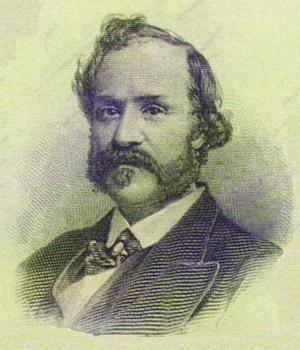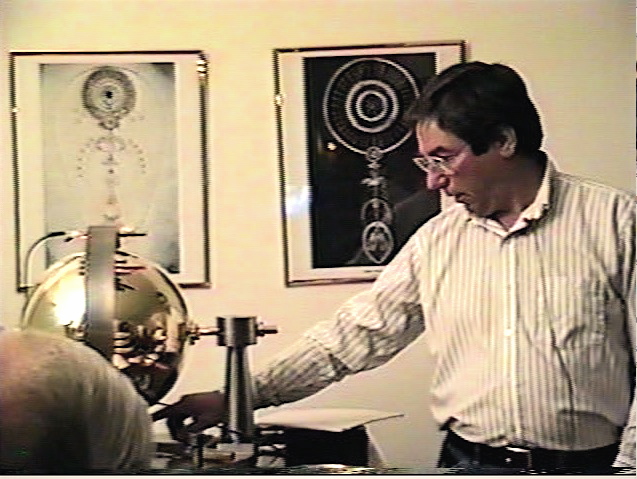| Check out the SVPwiki | SVP Cosmology 2.3 |
Ancient Greek modes, used by legendary Bards such as Orpheus and Homer, have a lot of power that can be used for specific purposes, according to some of the ancient writings. Some of these melodic forms were said to have very specific healing powers in the legends.
Each mode is a sequence of tones at set intervals. The sequencing of these tones has an effect on the mental processes of the listener, which could, in turn, cause physical effects. This means that there is a tremendous variation not only in the possible overall effects of the modes depending on the integrity of the musician, but also in the specific effects on an individual listener, depending on the preexisting mental states. That is why research into this matter is quite difficult.
There still exists, in the Hindu Raga system, a similar set of ideas, developed in a more complex fashion. The Hindu system differs markedly from the Pythagorean system covered in this paper in that most of the modes have differing structures depending on whether the melody is ascending or descending. Pythagorean modes are always the same either way, although it is possible to change modes within a piece of music.
Under the Greek or Pythagorean system, there are seven modes. Each of these seven could be started on any one of seven notes, which immediately provided 49 possible musical scale patterns. Over the past 20 years, some modes have been rediscovered and occasionally incorporated in American popular music. Since this incorporation has been somewhat random and largely undocumented, with no clinical testing of these patterns, few people have any idea that physical effects could result from the skilled use of modes. Of course, anyone experimenting with these modes for healing purposes should be in contact with a health professional who is treating the patient, if possible. Group experiments should be done very carefully, with the consent of everyone in the group. No health claims should be made previous to a experimental performance.
Following is a summary of the seven Pythagorean modes and their possible effects. Structural analysis of each mode was undertaken, and then the modes were played for individuals and small groups on a 26-string Celtic (diatonic) harp. The scale used was the conventional tempered scale, as developed by Bach. Subjects of these informal investigations were asked to close their eyes and let images form at random while the modes were being played. Reported images were taken into account in these summaries. Along with each mode is given the starting note when playing on a C-tuned diatonic instrument.
In general, the IONIAN (C) or Major scale that we use for about 90% of the music released in America was said to be a good general-use mode. It has a built-in imbalance of tonality as we presently use it, which mirrors the asymmetry of normal physical body structures, as noted by Aston2. In other words, the fact that everybody has the heart on the left side of the body is a metaphor for the way the Major scale is built, and probably has a lot to do with why that scale has become a preferred expression of music throughout the modern world.
DORIAN (D): This is known as the "balanced mode," because tone intervals are the same on each side of the center point in the scale. It was said by Ramsay1 to be a favorite of the ancient Greeks. In November 1987, this mode was used with a woman who had been divorced about a year previously. She immediately reported a feeling of emotional peace, which she had not felt for a long time. A tape was made for her, and she played it often in subsequent months. It was later reported that she entered into a very healthy relationship with a man and moved into a household with him.
In general, this mode seems to work well for helping to balance feminine emotional energy. Subsequent experiments, while not quite as dramatic as the first, have tended to confirm this.
This mode can also be played in a very active, strident manner. When that is done, emotions tend to well up in listeners rather dramatically. This mode has been used in some "hard rock" songs since about 1965. It is sometimes associated with a sense of mysticism.
PHRYGIAN (E): There is an intensity to this mode that makes experiments difficult. It seems to have a rather dramatic effect on some level of the physical body, but at the present time the precise effect has not been determined. Images of water were reported by several test subjects, which suggests a connection with the subconscious mind. Experiments should be approached with extreme caution! The key of E minor is closely related to this mode, and that key has often been used for works that express extreme emotional states.
LYDIAN (F): A man just lost his mother, father, and brother in a single auto accident two days before. He showed up at a meeting in great sorrow. He agreed to participate in an experiment, visualizing the three as being safe and in the presence of the Creator as he understood it. The harp was played in this mode, beginning of F. The man reported that he felt better able to come to terms with this tragedy after visualizing to the the music. Several other experiments have been tried with this mode, usually in group situations. It seems to be good for assisting in the release of emotions involved with separation or tragedy.
MIXOLYDIAN (G): Appalachian dulcimer players have long found this mode to be a favorite. It has a pastoral character, and could be useful in helping people to relate better with nature. It could thus be useful in helping people overcome certain phobias. Most listeners have reported nature images while visualizing.
AEOLIAN (A): This ia also called the "minor scale" in classical European music. It has long been used to express sorrow, which could be helpful up to a point. Unfortunately, it often has become associated with mental patterns of helplessness and fatalism. This probably has something to do with the fact that Europe experienced several extended periods of high fatality rates associated with wars and plagues from 1200 through the 1800s. The practice of using minor-keyed music at funerals seems to have caused an association with sorrow for most people of European ancestry, but that is not necessarily the original use of this mode. When taken out of the funerary context, some non-musicians in group situations have reported seeing nature scenes while visualizing. Since this mode has sometimes been carelessly used in the past, it would be best for a musician, when using this mode, to think of pastoral scenes instead of sorrow. This may help to direct the power of this mode in a more healthy manner.
LOCRIAN (B): This mode must be played with two-tone fourth chords in order to sound at all palatable to the American ear. It seems to have some relationship to assisting in the development of a new way of thinking. One experiment during a performance of Atlantean Lights apparently caused some people in the group to withdraw into their own thinking for a time, with consequent difficulty in relating to others. This is a very powerful mode, and it should be used carefully.
Each of these modes can also be obliquely related to the major key relative to the starting tone of the mode. This is the source of much of the relationship of musical keys to colors, as Halpern3 and Scriabin did in their respective systems. From that standpoint, the possibilities of experimental situations become very obvious. Within the 49 possible combinations of these modes is a whole universe of musical healing practice.
Readers of this article are encouraged to submit their own experimental results. Since the loss of most of the Pythagorean knowledge at the hands of Christian rioters in Alexandria a few centuries ago, many of the possibilities of using music for specific health-related work have been closed to us. We are now faced with the situation of rebuilding much of the information from scratch. Comments may be sent to the address at the end of this article. Also, practical experiments with chords should be carried out as soon as possible.
References:
1 - RAMSAY, Dougald Carmichael, The Scientific Basis and Build of Music, London, 1893. Available through Delta Spectrum Research, and an essential aid in building the experiments.
2 - ASTON, Judith, seminar, Boulder, CO, March 1988.
3 - HALPERN, Steven, Tuning the Human Instrument, Belmont, CA., 1978. This book has been superseded by Sound Health, which is more complete and currently in print.
Besides all the references to the work NASA is doing in the field of Acoustic Levitation there are a few from private individuals. Listed here are some of the known patents as registered in the U.S. Patent Office:
3,594,515 - Mayas - Propulsion Apparatus
3,626,605 - Wallace - Method and Apparatus for Generating a Secondary Gravitational Force Field
3,537,669 - Modesti - Manned Disc-Shaped Flying Machine
3,510,089 - Trupp - Propulsion system
3,464,207 - Okress - Quasi-Corona-Aerodynamic Vehicle
3,322,374 - Kind - Magnetohydrodynamic Propulsion Apparatus
3,199,809 - Modesti - Circular Wing Flying Craft
3,120,363 - Hagen - Flying Apparatus
2,939,648 - Fleissner - Rotating Jet Aircraft with Lifting Disc Wing and Centrifuging Tanks
2,886,976 - Dean - System for Converting Rotary Motion into Unidirectional Motion
2,207,428 - Wibault - Aircraft with Enclosed Rotor
3,095,163 - Hill - Ionized Boundary Layer Fluid Pumping System
1,974,483 - Brown - Electrostatic Motor
2,949,550 - Brown - Electrokinetic Apparatus
3,018,394 - Brown - Electrokinetic Transducer
3,022,430 - Brown - Electrokinetic Generator
3,187,206 - Brown - Electrokinetic Apparatus
3,130,945 - DeSeversky - Ionocraft
2,958,790 - Bahnson - Electrical Thrust Producing Device
3,263,102 - Bahnson - Electrical Thrust Producing Device
3,223,038 - Bahnson - Electrical Thrust Producing Device
3,227,901 - Bahnson - Electrical Thrust Producing Device
3,095,167 - Dudley - Apparatus for the Promotion and Control of Vehicular Flight
3,024,371 - Lefkowitz - Dielectric Generator
3,102,384 - Bennett - Propulsion Means for Space Flight
As we can see, the work covered is extensive and does not include NASAs numerous patents. Without reviewing each and every patent above, we cannot say which ones have potential and to whatever degree they may be in line with Keelys theories and/or NASAs discoveries. We feel that there is enough raw data available in the many sources available to us to begin to unravel the gravitation question. One is reminded of the Wright brothers initial research work. Much data about aerodynamics was available to them, some correct and some erroneous, but with application and "dog-work" they took what was at hand and FLEW. We sense we are at that very same crossroads. Someone, somewhere is going to unlock this secret for all to benefit yet within our lifetime. We will see the day when wings are stripped from airplanes and Cayces vision of "cigar-shaped" flying vessels will be a reality!
 |
||
 |